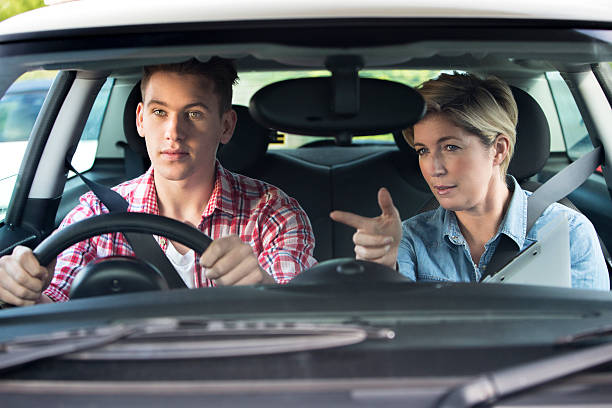How to avoid rear end collisions

It is really quite easy to avoid rear end collisions. Despite this fact, of the 7058 reportable injury collisions in Alberta in 2014, 3457 were the result of following too close. Most drivers are taught the two second following rule when they are first learning how to drive. Essentially a person needs to allow a minimum of two seconds distance between their vehicle and the vehicle in front of them. The reason for this is that our perception time is about 3/4 of a second and our reaction time is also about 3/4 of second. Thus it takes about one and a half seconds to perceive and react to the vehicle in front. Following a minimum of two seconds allows a person time to stop if needed.
If a person is driving a larger vehicle that requires a greater stopping distance then they must allow an even greater following distance since the two second rule assumes the vehicles are stopping at a similar rate. The driver of a truck pulling a holiday trailer will need to leave 3 0r 4 seconds behind a motorcycle for instance. In the event of an emergency a motorcycle can stop very quickly. The driver of the truck and trailer, even though he can react quickly, won’t be able to bring his vehicle to a stop in time.
On the other hand, a driver, if he is using proper visual lead time, should be able to perceive emergency situations even before the vehicle immediately in front can react. A driver should be scanning the roadway 20-25 seconds ahead. If the drivers several positions ahead step on the brakes or swerve this is a good indication that there is something ahead that needs to be avoided.
In the event that you are being tailgated, although it is very tempting, the worst thing you can do is “brake check” the driver behind. Brake checking is stepping on the brakes causing the driver behind to step on his or her brakes. This can have serious consequences.
In the video a driver is in the passing lane as another vehicle approaches from the rear. The first car refuses to pull over into the right lane while the second car continues riding the bumper of the first car. Should the first driver have stayed in the passing lane rather than changing to the right lane, probably not. Not doing this isn’t likely to cause any issue other than exasperated drivers. The second car began following dangerously close. Should the driver have done this, of course not. Had the driver in the first car needed to come to a complete emergency stop, the second car would have been inside his trunk. Neither were behaving safely on the road. However, it was the frustrated actions of the first driver that could have caused injury and even death. Regardless of our frustration level with other drivers actions like this are never acceptable. In this case, fortunately, no one was hurt. The highway is not the place to try and “teach someone a lesson.” The consequences could be lethal.
When a person is tailgating you, if you can, change lanes and let them go by. On a two lane highway, when the opportunity for the tailgater to pass you presents itself, slow slightly allowing the driver to pass. Don’t feel compelled to drive over the speed limit or too fast for the road conditions. It is the tailgater, not you, who is in the wrong.
Although our anger and frustration may lead us to this conclusion, it isn’t our place to “teach someone a lesson.” I think of the time a friend of mine, while he was at work, received a phone call from his pregnant wife telling him that she was, at that moment, miscarrying their baby. She was five months along. His first thought was to be home with her and his two young children who were at home while this was happening. According to him he was driving at ridiculously high speeds on the freeway in order to get home. Should he have been travelling this fast? Of course he shouldn’t. But, a driver wanting to teach him a lesson by refusing to let him pass would have done no one any good either and could very easily have caused a serious collision. If someone approaches at a high rate of speed the best thing to do is at the first possible opportunity let him or her pass. The person could be a jerk driving fast for the sake of being stupid or it could be someone who has a personal emergency and they just can’t fathom being apart from the loved one who is in trouble. This isn’t about condoning the actions of the person speeding.
We need to drive with the safety of the other drivers in mind. If we all do this, we will all get home safely.
